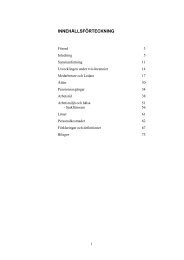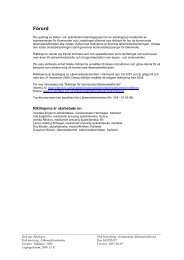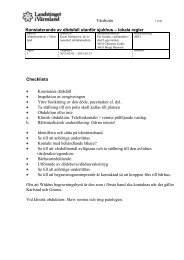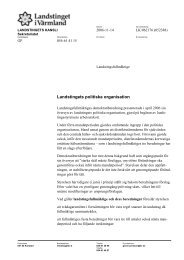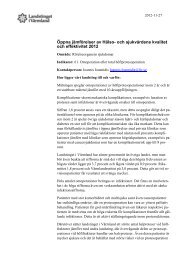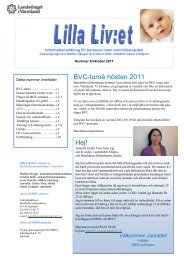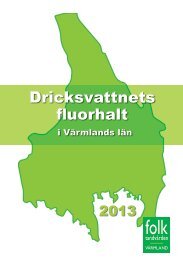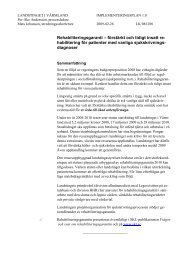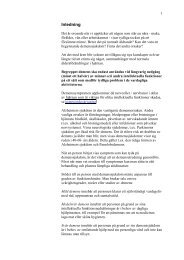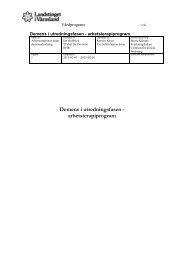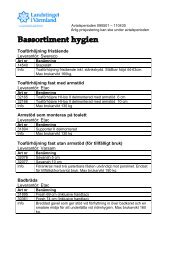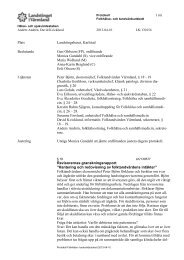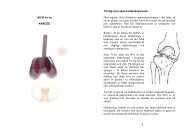Severs skada – paradigmskifte gällande diagnostik och behandling?
Severs skada – paradigmskifte gällande diagnostik och behandling?
Severs skada – paradigmskifte gällande diagnostik och behandling?
You also want an ePaper? Increase the reach of your titles
YUMPU automatically turns print PDFs into web optimized ePapers that Google loves.
Fig. 2. The heel cup, the foot (in the study always supported<br />
by a sports shoe) and the heel wedge.<br />
were used, the questionnaire was filled in eight times per<br />
person for each activity. A post-treatment phase of 2 weeks<br />
finally followed, without any insoles, when again the pain<br />
questionnaire for pain related to the chosen sport activity was<br />
filled in six times each for the two chosen activities A and B<br />
(Fig. 1). Activity levels were assessed at the start of the study<br />
and in the two phase shifts, three times in total (Fig. 4).<br />
Measurement for the non-treatment group (n 5 5) was<br />
activity level, median and range for the self-assessed pain at<br />
the start and end.<br />
The study was approved by the Regional Ethics Board of<br />
Uppsala (dnr 2004 M-377).<br />
Statistics<br />
Median pain for each boy was calculated for each of the three<br />
phases, pre-treatment, treatment and post-treatment, separately<br />
for activities A and B, and termed the pain variable.<br />
Median pain for the whole study group (n 5 33) was thereafter<br />
calculated from these pain variables, for each phase and<br />
activity. Interquartile range (IQR) (i.e. the numerical difference<br />
between the 25th and 75th centiles) was also calculated.<br />
To analyze the change over time between the different<br />
phases, for activity A and activity B separately, Wilcoxon’s<br />
signed-rank test was used. The pain variables for the group for<br />
activity A and activity B in the pre-treatment phase were<br />
compared with the pain variables in the treatment phase. The<br />
pain variables in the treatment phase were also compared with<br />
the pain variables in the post-treatment phase, and finally the<br />
pain variables in the pre-treatment phase were compared with<br />
the variables in the post-treatment phase (Fig. 3).<br />
To correct for mass significance, Holm’s sequential Bonferroni’ssss<br />
test was used.<br />
Results<br />
There was a significant reduction in pain level during<br />
activity with insoles, when comparing pain levels in<br />
the pre-treatment and treatment phase, for both<br />
activities A and B (Po0.001) (Fig. 3). Median pain<br />
level in the pre-treatment phase was 4.5 in activity A<br />
(IQR 2.5) and 4.0 in activity B (IQR 2.5). During<br />
treatment, pain was reduced to 2.0 (IQR 3.50) in<br />
both activities A and B. After discontinuation of the<br />
38<br />
Median pain values (VAS)<br />
10.00<br />
9.00<br />
8.00<br />
7.00<br />
6.00<br />
5.00<br />
4.00<br />
3.00<br />
2.00<br />
1.00<br />
Sever’s injury: insole treatment<br />
p



